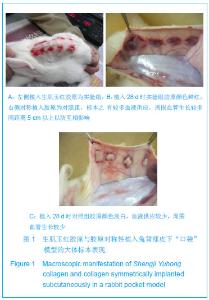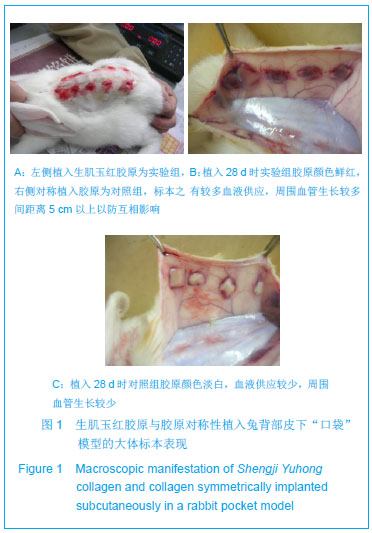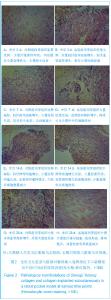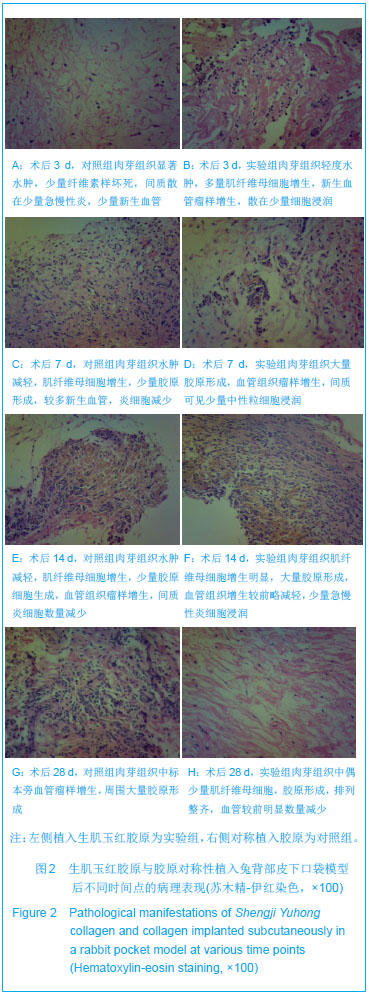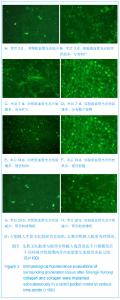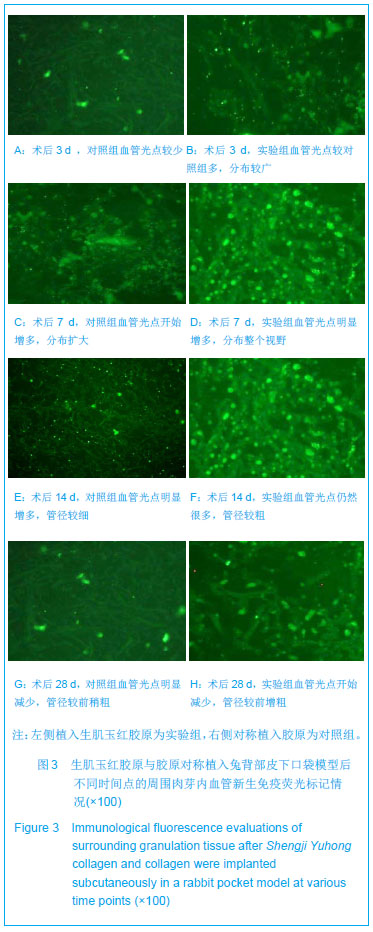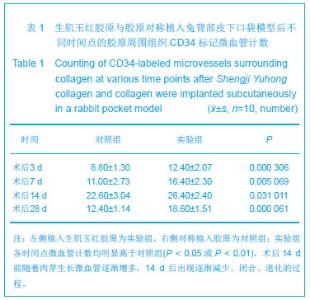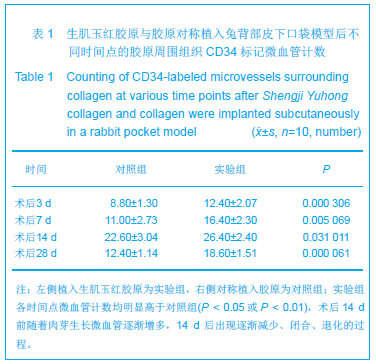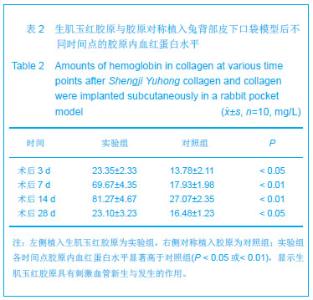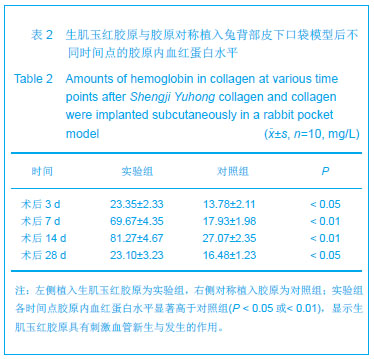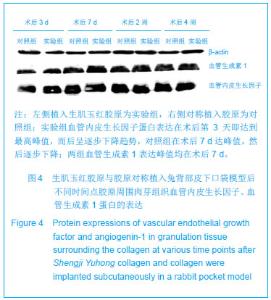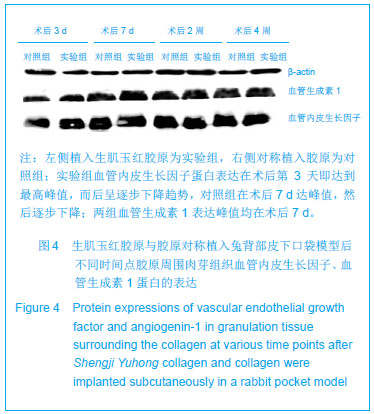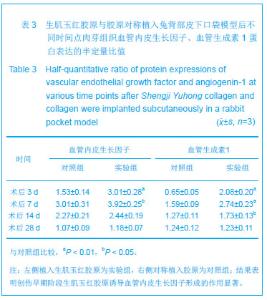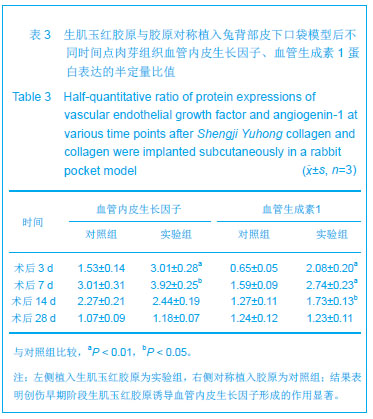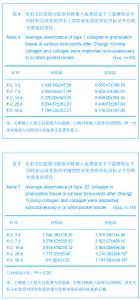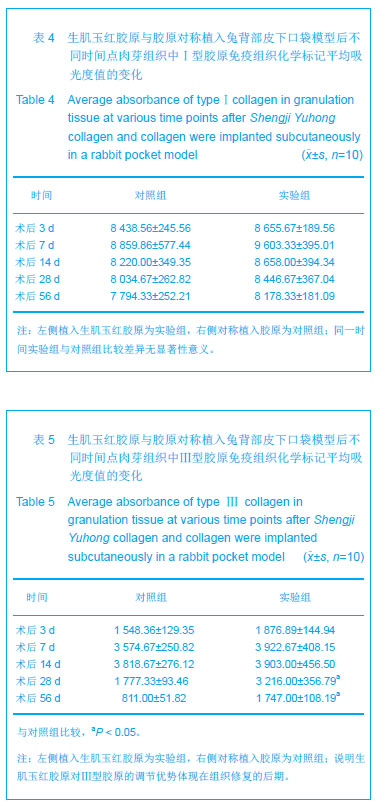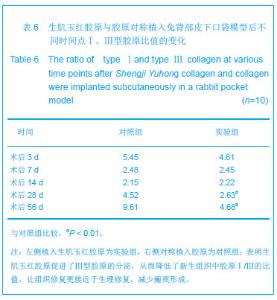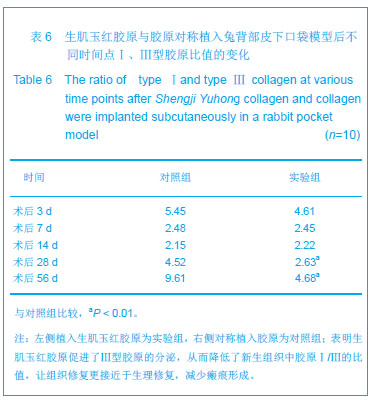| [1]Hong H,Stegemann JP.2D and 3D collagen and fibrin biopolymers promote specific ECM and integrin gene expression by vascular smooth muscle cells. J Biomater Sci Polym Ed.2008;19(10):1279-1293.[2]Yao C,Markowicz M,Pallua N,et al.The effect of cross-linking of collagen matrices on their angiogenic capability. Biomaterials. 2008;29(1):66-74.[3]缪雪华,张宇轩,陈运,等.生肌玉红胶原海绵促进胶原合成与组织愈合的研究[J].南京中医药大学学报, 2012,28(4):337-341.[4]严婷婷,熊猛,周勇,等. 生肌玉红胶原海绵修复创面损伤[J].中国组织工程研究与临床康复, 2011,15(29):5367-5370.[5]李永刚,高卫卫,姚昶.生肌玉红明胶海绵对机械性大鼠创面微循环影响的实验研究[J]. 江苏中医药, 2010,42(12):71-73.[6]高卫卫,姚昶. 生肌玉红明胶海绵治疗慢性下肢溃疡32例临床观察[J].江苏中医药, 2010,42(3): 46-47.[7]姚昶,孙海舰,姚涌晖,等.生肌玉红明胶海绵促进机械性创面肉芽生长的实验研究[J].医学研究杂志,2009,38(5):62-65.[8]Markowicz M,Koellensperger E,Steffens GC,et al.The impact of vacuum freeze-drying on collagen sponges after gas plasma sterilization. J Biomater Sci Polym Ed.2006;17(1-2): 61-75.[9]唐昱,盛国太,钟志英,等.丹红注射液促进鸡胚绒毛尿囊膜血管生成的实验研究[J].中西医结合心脑血管病杂志,2010,8(3): 3110- 3111.[10]姚昶,高卫卫,薛涛.黄芪、脉络宁注射液载入修饰胶原对鸡胚尿囊膜血管新生的协同促进作用[J].中国组织工程研究与临床康复,2010,14(34):6342-6346.[11]Chambers MS.Clinical commentary on prophylactic treatment of radiation-induced xerostomia.Arch Otolaryngol Head Neck Surg.2003;129(2):251-252.[12]Ribatti D,Nico B,Vacca A,et al.Chorioallantoic membrane capillary bed : a useful target for studying angiogenesis and antiangiogenesis in vivo.Anat Rec.2001;264(4):317-324. [13]姚昶,薛涛,朱永康,等.鸡胚绒毛尿囊膜模型在微血管实验研究中的应用[J].微循环学杂志,2005,15(4):70-73.[14]Cimpean AM,Ribatti D,Raica M. A brief history of angiogenesis assays. Int J Dev Biol. 2011;55(4-5):377-382.[15]Sun B,Chen B,Zhao Y,et al.Crosslinking heparin to collagen scaffolds for the delivery of human platelet-derived growth factor. J Biomed Mater Res B Appl Biomater.2009;91(1): 366-372.[16]陈德轩,朱永康,姚昶. 生肌玉红膏载入修饰后胶原的生物相容性研究[J].中华中医药学刊,2012,30(6):1234-1236.[17]钟爱梅.自体脂肪移植和血管形成[J].中国美容医学,2006,15(3): 341-343.[18]柳晖,陈武鹏,徐华,等.联合VEGF和Ang-1基因治疗促进移植皮瓣血管化的实验研究[J].现代医院,2009,9(5): 25-27.[19]向军,王西樵,刘英开,等.烧伤后瘢痕组织中成纤维细胞ET-1表达及血管新生和胶原分布研究[J].上海交通大学学报:医学版, 2010, 30(7):839-842.[20]沈锐,利天增,祁少海,等.靶向血管治疗增生性瘢痕的实验研究[J].中华整形外科杂志,2003,19(4):254-257.[21]Reinke JM,Sorg H.Wound Repair and Regeneration.Eur Surg Res.2012;49(7):35-43.[22]Wilgus TA,DiPietro LA.Complex roles for VEGF in dermal wound healing. J Invest Dermatol.2012;132(2):493-494. |
